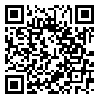Volume 20, Issue 69 (10-2017)
jha 2017, 20(69): 67-78 |
Back to browse issues page
Download citation:
BibTeX | RIS | EndNote | Medlars | ProCite | Reference Manager | RefWorks
Send citation to:



BibTeX | RIS | EndNote | Medlars | ProCite | Reference Manager | RefWorks
Send citation to:
Ahmadian L, Salehi F, Abedinzadeh A, Khatibi F. Usability Evaluation of a Radiology Information System. jha 2017; 20 (69) :67-78
URL: http://jha.iums.ac.ir/article-1-2273-en.html
URL: http://jha.iums.ac.ir/article-1-2273-en.html
1- Medical Informatics Research Center, Institute for Futures Studies in Health, Kerman University of Medical Sciences, Kerman, Iran
2- School of Management and Medical Information, Kerman University of Medical Sciences, Kerman ,fsalehi891@gmail.com
3- School of Management and Medical Information, Kerman University of Medical Sciences, Kerman, Iran
2- School of Management and Medical Information, Kerman University of Medical Sciences, Kerman ,
3- School of Management and Medical Information, Kerman University of Medical Sciences, Kerman, Iran
Abstract: (6032 Views)
Introduction: One of the health information systems used in health care settings is Radiology Information System. This system can increase the quality and accuracy of work processes in the radiology department and can reduce the number of human resources required to archive images as well as the hospital costs, and, finally, can lower the retrieval time of archived images. Lack of usability of this system can affect the speed and accuracy of this task. The aim of this study was to evaluate the conformity rates of Radiology Information System with usability principles.
Methods: This cross-sectional descriptive study (2015) uses heuristic evaluation method to evaluate the usability of RIS used in the teaching hospitals of Kerman University of Medical Sciences. Usability of RISs was investigated based on the usability principles developed by Nielsen.
Results: There were 53 usability problems. The lowest mismatch with usability principles was related to “Help and documentation” (n=1) and the highest was related to “Match with real world” (n=14) and "Aesthetic and minimalist design" (n=14).
Conclusion: Our findings showed that although the information systems such as RIS are often new, they are supposed to be designed based on the standards and the required users. In many cases, however, they have numerous problems. If they remain unsolved, these problems may increase errors, reduce care quality, and in general, threaten patients’ safety.
Methods: This cross-sectional descriptive study (2015) uses heuristic evaluation method to evaluate the usability of RIS used in the teaching hospitals of Kerman University of Medical Sciences. Usability of RISs was investigated based on the usability principles developed by Nielsen.
Results: There were 53 usability problems. The lowest mismatch with usability principles was related to “Help and documentation” (n=1) and the highest was related to “Match with real world” (n=14) and "Aesthetic and minimalist design" (n=14).
Conclusion: Our findings showed that although the information systems such as RIS are often new, they are supposed to be designed based on the standards and the required users. In many cases, however, they have numerous problems. If they remain unsolved, these problems may increase errors, reduce care quality, and in general, threaten patients’ safety.
Type of Study: Research |
Received: 2016/12/1 | Accepted: 2017/09/23 | Published: 2017/09/23
Received: 2016/12/1 | Accepted: 2017/09/23 | Published: 2017/09/23
Send email to the article author
| Rights and permissions | |
 |
This work is licensed under a Creative Commons Attribution-NonCommercial 4.0 International License. |





